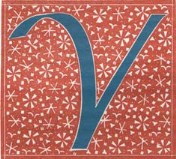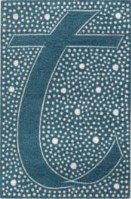
WHO WAS VICTOR HAMMER
 ictor Karl Hammer, a Viennese society portraitist and painter of religious and mythological scenes, was also a print-maker who mastered the 17th-century
art of the mezzotint, drew in silverpoint, worked as a sculptor, architect, maker of musical instruments, designer of uncial
typefaces, printer, bookbinder, author, and teacher.
ictor Karl Hammer, a Viennese society portraitist and painter of religious and mythological scenes, was also a print-maker who mastered the 17th-century
art of the mezzotint, drew in silverpoint, worked as a sculptor, architect, maker of musical instruments, designer of uncial
typefaces, printer, bookbinder, author, and teacher.
Hammer was trained at the Vienna Academy and afterwards shared a studio with the painter Richard Gerstl. Gerstl, after an affair with the wife of Arnold Schonberg,
committed suicide, an event that perhaps caused Hammer to remain afterwards preoccupied with the theme of Christ and the adulteress, a biblical episode that he painted in
five versions. Hammer was elected to the Vienna Secession in 1912, joining Gustav Klimt and others, but later withdrew to travel and pursue a more independent course.
He was encouraged to build clavichords by Albert Schweitzer, prepared a portrait bust of Hugo von Hofmannsthal for a monument in Salzburg, and made a mezzotint portrait of the musicologist Heinrich Schenker, among numerous other commissions.
A cosmopolitan figure, Hammer worked in Vienna, Florence, London, Paris, and Constantinople.
In Florence he was befriended by Bernard Berenson and Nicky Mariano,
who wrote: "Hammer seemed to belong to another century combining art and artisanship most happily. He was an expert draughtsman, an accomplished painter,
a printer of fine books with characters designed by him, a constructor of musical instruments.
His discussions with B.B. were sometimes so profound that ordinary mortals could not follow them." At I Tatti he made friends as well with Sir Kenneth Clark,
whose portrait he took, and also with Sir John Rothenstein, later to be his biographer.
Edgar Kaufmann, Sr., commissioned a portrait that still hangs
in his home, "Fallingwater", and his son, Edgar Kaufmann, Jr., was an apprentice and backer in Hammer's Florentine atelier, before his period of study with Frank Lloyd Wright. The younger
Kaufmann remained a loyal and supportive patron throughout Hammer's career.
In London, Rothenstein's father, Sir William, helped to organize an exhibition of Hammer's work, and Hammer undertook portraits of Baron Georg von Franckenstein,
the Austrian ambassador; Count Paravicini, the Swiss ambassador, and his wife; Sir Frederick Ponsonby (father of Loelia, Duchess of Westminster);
the Duchess of Rutland; and others.
Leaving Europe for the United States in 1939, he taught at Wells
College in Aurora, New York and afterwards at Transylvania College in Lexington, Kentucky.
After emigrating to America, Hammer continued his work as an artist, typographer, and teacher.
THE IMPETUS FOR A HAMMER RETROSPETTIVE
 he career of Victor Hammer, the once well-recognized Viennese artist, was interrupted by the Nazi upheaval in
Europe in the 1930s. A friend of Bernard Berenson, Hugo
von Hofmannsthal, Rudolf Serkin, Rudolf Koch, Kenneth Clark, Sir William and Sir John Rothenstein, Richard Gerstl and many others in the fields of art, music, and
literature, Hammer was
forced to leave Austria for America.
Describing Hammer in connection with his Austrian friend Richard Gerstl, art historian Patrick Werkner writes in AUSTRIAN EXPRESSIONISM that Hammer "was the same age
as Gerstl but had little in common with him artistically speaking. Hammer painted mainly portraits and nudes with precise, old-masterly realism. Later he was an
extremely fashionable society painter, and in particular a renewer of type design."
he career of Victor Hammer, the once well-recognized Viennese artist, was interrupted by the Nazi upheaval in
Europe in the 1930s. A friend of Bernard Berenson, Hugo
von Hofmannsthal, Rudolf Serkin, Rudolf Koch, Kenneth Clark, Sir William and Sir John Rothenstein, Richard Gerstl and many others in the fields of art, music, and
literature, Hammer was
forced to leave Austria for America.
Describing Hammer in connection with his Austrian friend Richard Gerstl, art historian Patrick Werkner writes in AUSTRIAN EXPRESSIONISM that Hammer "was the same age
as Gerstl but had little in common with him artistically speaking. Hammer painted mainly portraits and nudes with precise, old-masterly realism. Later he was an
extremely fashionable society painter, and in particular a renewer of type design."
Hammer was trained at the Vienna Academy and was elected to the Vienna
Secession in 1912, placing him within the circle of Klimt, Kokoschka, Gerstl, and others. He worked not only in Vienna, however, but in Florence, London, Paris,
and Constantinople and exhibited in Vienna, Munich, Berlin, Florence, Venice, London, and Paris.
In 1938, Hammer was awarded a professorship at the Vienna Academy.
At this point, writes scholar Sophie Eisenhut, "Victor Hammer was on top of his career as an
artist. However, on 13 March 1938, the day of the Anschluss joining Austria to Germany, Hammer was forbidden any longer to instruct. The school's administration,
or Kommissarische Leitung, cited his ‘prior political attitude [Hammer had been since 1936 a member of the Vaterlandische Front, a politically conservative
organization
opposed to the Anschluss], his assumed relations with the Masonic Lodge, and his acquaintances with Jews.'
Hammer's 1938-1939 personal file from the Austrian government comments on his professional attributes by noting that: ‘As an artist he enjoys a good reputation and
is very experienced technically and as a craftsman. . . . His main subject is portraiture, securing him great success
in Austria and abroad.' Nevertheless, Austrian officials condemned Hammer for his political leanings:
‘Before the Anschluss he was against the NSDAP, and he and his family still seem to play a waiting game. . . . Already in early years he came into contact with
influential Jews. On his trips to England he frequently met with Free- masons. . . . His daughter is said to be married with a Jew (Baron Oppenheimer). Hammer
is of calculating character and was dismissed from the Academy by the temporary headship.'"
By August of 1939 Hammer was permanently retired from his post at the Vienna Academy, and in the following month he escaped with his wife to a post at Wells
College in Aurora, New York. The appointment was made for him through the assistance of friends, chiefly Nicolas Nabokov, kinsman of the writer Vladimir Nabokov.
Although Hammer continued until his death in his work as a painter, his American career did not win the public notice or intellectual recognition he enjoyed in
his European years. Partly because of the ascendancy of abstract art and partly because of his residency in Aurora and later Lexington, Kentucky-two cities
remote from the major American cultural centers-his work was not exhibited in prominent venues or widely discussed in the art press. Still, he fostered
friendships and correspondences with such figures as Wallace Stevens, Thomas Merton, August Heckscher, Edgar Kaufmann, Fritz Kredel (a former student),
James Laughlin, Ulrich Middeldorf, Liam Miller, Lewis Mumford, Herbert Read, and others.
An exhibition of the work of Victor Hammer would provide the opportunity to feature an artist of the Vienna Academy and the Vienna Secession who gained immediate
prominence as a society portraitist and whose work can be exhibited from a great survival of preliminary drawings, paintings in egg tempera, triptychs, drawings
in silver point, prints in mezzotint, a sculpture in bronze of Hugo von Hofmannsthal, specimens of the book art in exquisite type design and decoration, and, if
desired, interesting celebrity correspondence, as well. Hammer's work has been little seen in America and is worthy of notice in connection with his early
associations with Austrian and broader European art and culture.
Victor Hammer fled Vienna so as not to be used by the Nazis. Here was an artist from Vienna who members of this Society consider to
be of considerable importance despite his not being included in the display of works the Nazis considered "decadent". In the final consideration however, he was very much a man of his time.
VICTOR HAMMER: CHRONOLOGY
1882 Born 9 December, Vienna
1897 Apprentice in the studio of Camillo Sitte
1898 Student at the Academy of Fine Arts, Vienna, with Griepenkerl and Lefler (exhibits publicly his life-size oil portraits)
1908 To Paris and Munich on Staatspreis Austrian Traveling Fellowship
1909 Studio in Vienna; Prix, Rome
1912 Elected to the Vienna Secession; exhibits in Vienna, Berlin, Munich
1914 War years: four months in combat with the Fourth Austrian Infantry
Regiment; remaining years as war artist in the Urals and in Constantinople
1919 Returns to his studio in Vienna which he maintains there until 1939; during these years, however, he is in residence with his family at Obernberg am Inn, St.
Martin im Innkreis, Grundlsee (where he paints his portraits on parchment of Austrians in regional dress).
1922 In Florence with his family; travels (portraits in Bern, Berlin, Munich, Paris, Kiel, London, Pittsburgh, etc.); establishes his private press
(Stamperia del Santuccio) and cuts two of his uncial type faces.
1933 In London he completes several of his mezzotint portraits, becomes interested in working with silver; is commissioned to cut the memorial inscription,
with bust above it, for Hugo von Hofmannsthal (in the Festspielhaus, Salzburg).
1934 He is asked to come to the Chateau Kolbsheim, Alsace. Designs and builds private chapel and partially completes its portal sculpture (work
on the sculpture and the painting of the Crucifixus for the altar completed in 1958); establishes his press here.
1935 Golden Badge of Honor for Service to his Country
1936 Director of Schule fur Freie und Strenge Kunste, Grundlsee; establishes his press.
1938 Appointed to a professorship in the Academy of Fine Arts, Vienna; establishes his press.
1939 Must leave Vienna; emigrates to the United States; teaches in the Art Department of Wells College (Aurora, NY); completes two of his allegorical
paintings on gold-ground: Santa Notburga and Aesop and Rhodopis; establishes his press and the Wells College Press; cuts a third uncial type-face; continues
to paint portraits.
1948 Moves to Lexington, KY, to accept a position in the Art Department, Transylvania University; establishes his press and cuts a fourth uncial type face;
completes five portraits and eight of his allegorical paintings on gold ground.
1967 Victor Hammer dies on 10 July in Lexington.
[Text partially from the University of Kentucky Art Museum]